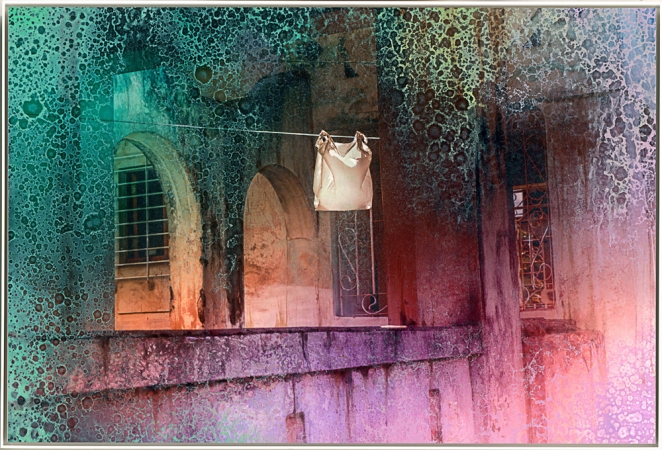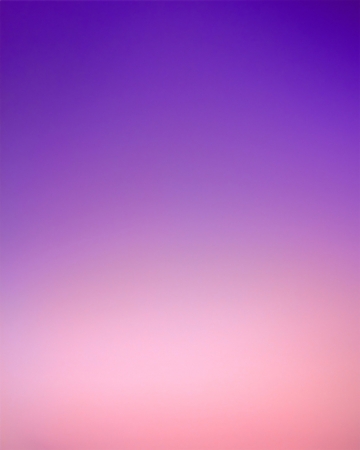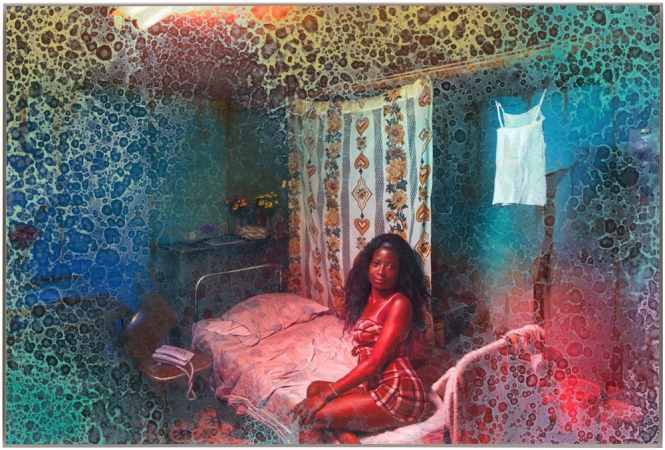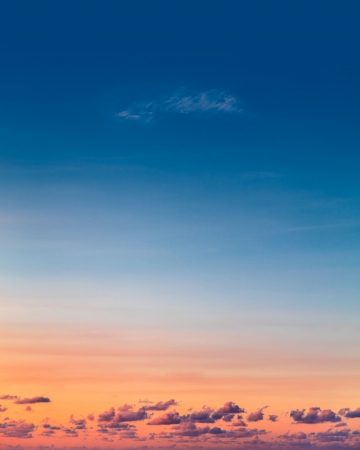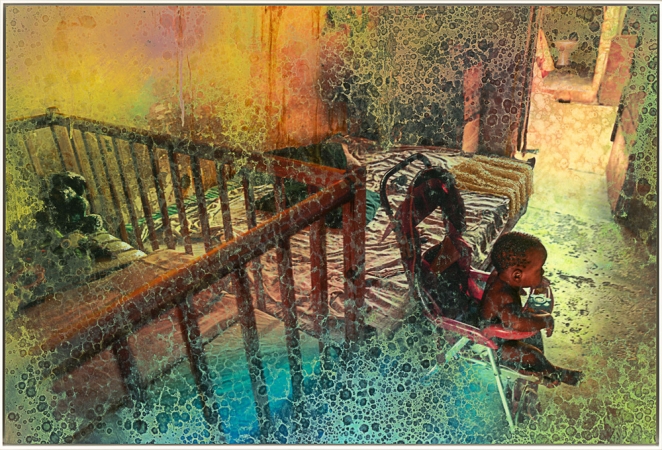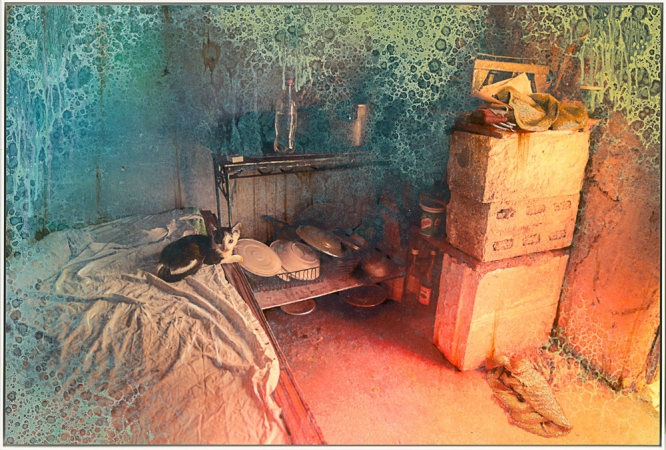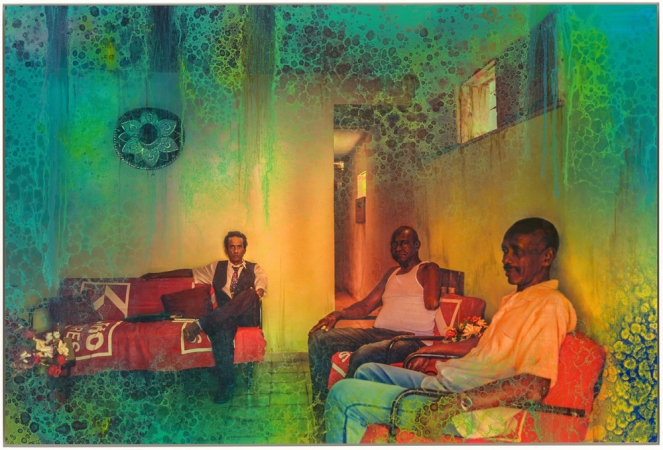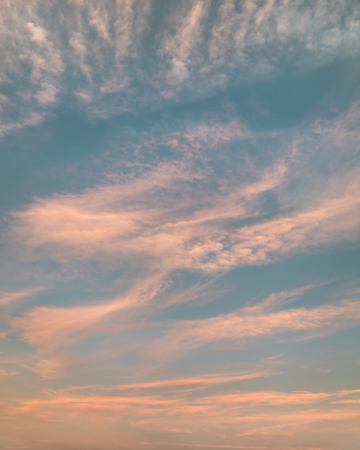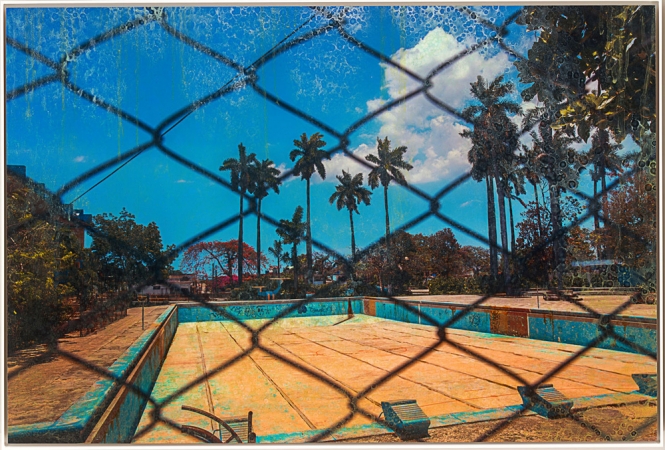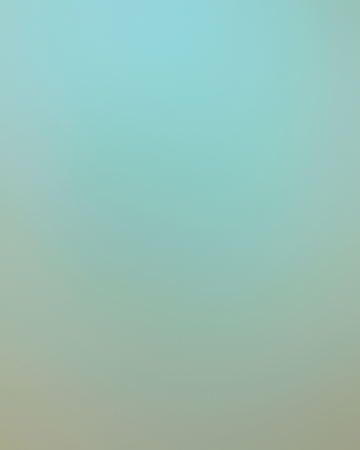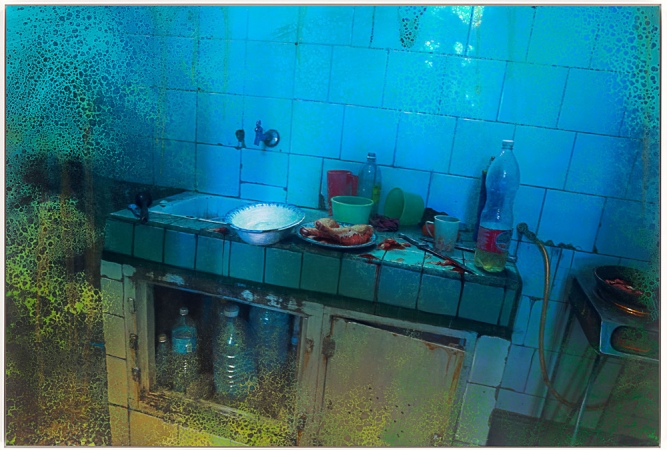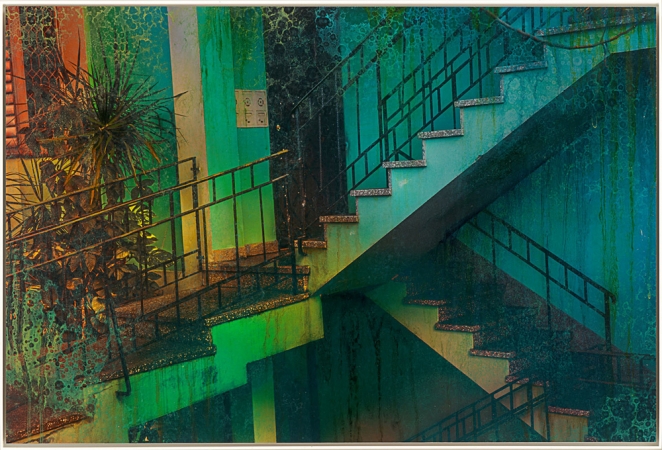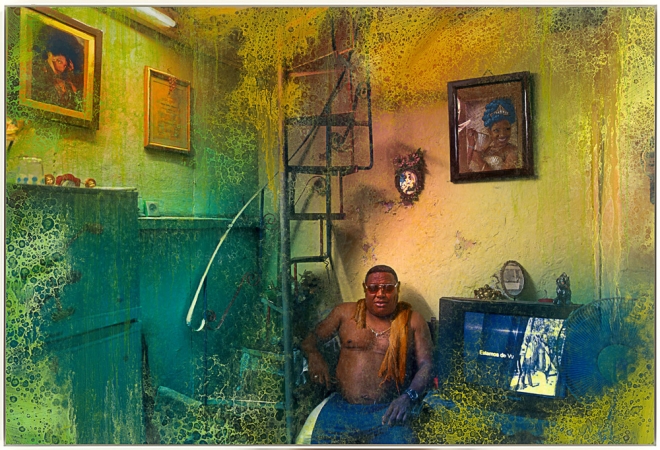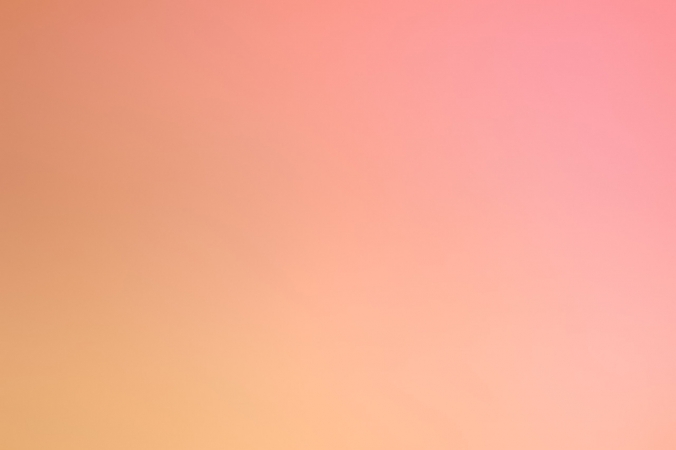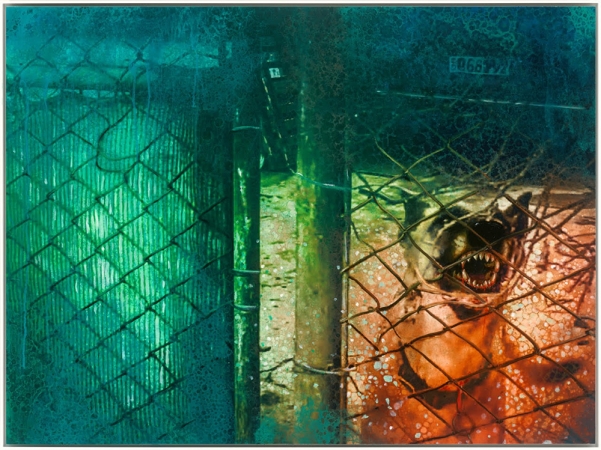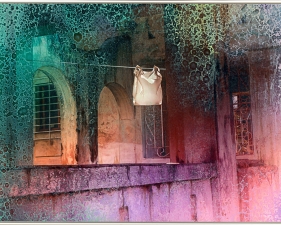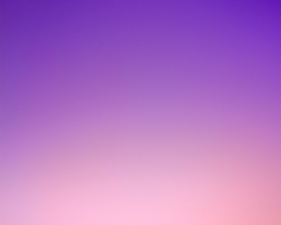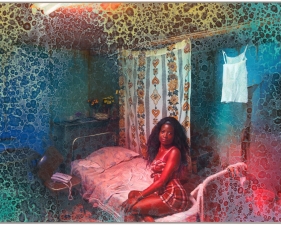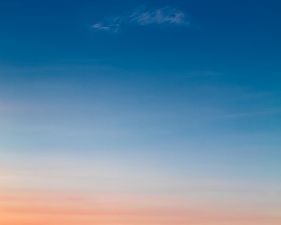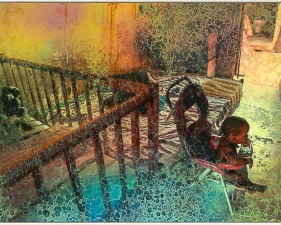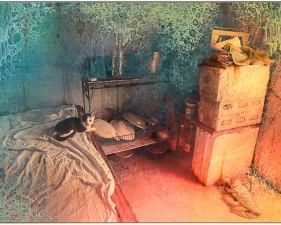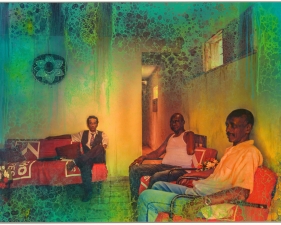Rabbits, Rats and Cats
Opening Reception: Thursday, March 2, 2017 at 6pm
Benrubi Gallery is pleased to present Rabbits, Rats & Cats, the gallery’s second solo exhibition by Eric Cahan, after 2013’s Sky Series.
Cahan visited Havana, Cuba and its nearby villages three times in 2016, spending significant time in El Barrio del Fanguito, where he was witness to Cuba’s social immobility and poverty, as well as to a lifestyle more in harmony with nature and the basic needs of its citizens than that of much of the West.
While in Cuba, Cahan took part in two Ayahuasca ceremonies, which opened his heart and mind to new ways of seeing, and gave him a sense of connection to the people around him, and to their own connection to their land. Rabbits, Rats, and Cats was born out of these experiences. It integrates Cahan’s artistic practices, presenting photography, painting, and a film documenting his alternative vision of Cuban life, where inhabitants are portrayed as hybrid animal-human forms and anthropomorphic extensions of their surroundings.
Using his photographs as a blueprint, Cahan enhanced each image through an alchemic treatment that tessellates the photographic surface, some of which is layered in oil paint, while other sections are reduced to phthalo shimmers, before the picture is finished with a crackle varnish that resembles the scaling in the initial strata. Cahan’s manipulations unmasks the supposed objectivity of the photographic process as the subjective perspective it is, while the arbitrary and often surreal details of the painted imagery acquire a documentary inevitability in conjunction with its photographic base.
Cahan’s painted images hearken back to 19th-century color photography, whose painstakingly hand- tinted prints seem to modern eyes uncanny in their meticulous detail. However, the stripping and accreting process of Cahan’s modern approach echoes the Ayahuasca experience of peeling back layers of existence to reconfigure one’s perspective. Cahan’s subjects retain their every-day identity and remain in their quotidian reality, but now possess an added or revealed aura of vivid psychological, cultural, and spiritual significance. The tension between the subjects’ gritty, impoverished setting and the vibrant colors and hallucinogenic imagery results in images that are at once documentary and fantastic, sober and liberating, and filled with compassion and connection for both the seen and unseen worlds.
Accompanying the paintings is a nonlinear film constructed from fragments of Cahan’s documentation and the resulting paintings, all of which give physical form to the artist’s psychedelic- evoked reality. Inspired by details in the paintings, a collection of generic suicide notes, as well as the psychological images they evoke, Cahan’s narrative voice-over acts as a guide to the film, which chronicles the death of the artist’s ego and his awakening into a new plane of coexistence. Like the photographs, the film gives form to otherwise non-corporeal mental states, while simultaneously challenging our assumptions about what we really see when we look at the world.
Eric Cahan was born and raised in Manhattan. He studied at The University of Southern California and New York University, where he graduated from The Tisch School of the Arts' Film Program. He currently resides in Brooklyn, New York.
Cahan visited Havana, Cuba and its nearby villages three times in 2016, spending significant time in El Barrio del Fanguito, where he was witness to Cuba’s social immobility and poverty, as well as to a lifestyle more in harmony with nature and the basic needs of its citizens than that of much of the West.
While in Cuba, Cahan took part in two Ayahuasca ceremonies, which opened his heart and mind to new ways of seeing, and gave him a sense of connection to the people around him, and to their own connection to their land. Rabbits, Rats, and Cats was born out of these experiences. It integrates Cahan’s artistic practices, presenting photography, painting, and a film documenting his alternative vision of Cuban life, where inhabitants are portrayed as hybrid animal-human forms and anthropomorphic extensions of their surroundings.
Using his photographs as a blueprint, Cahan enhanced each image through an alchemic treatment that tessellates the photographic surface, some of which is layered in oil paint, while other sections are reduced to phthalo shimmers, before the picture is finished with a crackle varnish that resembles the scaling in the initial strata. Cahan’s manipulations unmasks the supposed objectivity of the photographic process as the subjective perspective it is, while the arbitrary and often surreal details of the painted imagery acquire a documentary inevitability in conjunction with its photographic base.
Cahan’s painted images hearken back to 19th-century color photography, whose painstakingly hand- tinted prints seem to modern eyes uncanny in their meticulous detail. However, the stripping and accreting process of Cahan’s modern approach echoes the Ayahuasca experience of peeling back layers of existence to reconfigure one’s perspective. Cahan’s subjects retain their every-day identity and remain in their quotidian reality, but now possess an added or revealed aura of vivid psychological, cultural, and spiritual significance. The tension between the subjects’ gritty, impoverished setting and the vibrant colors and hallucinogenic imagery results in images that are at once documentary and fantastic, sober and liberating, and filled with compassion and connection for both the seen and unseen worlds.
Accompanying the paintings is a nonlinear film constructed from fragments of Cahan’s documentation and the resulting paintings, all of which give physical form to the artist’s psychedelic- evoked reality. Inspired by details in the paintings, a collection of generic suicide notes, as well as the psychological images they evoke, Cahan’s narrative voice-over acts as a guide to the film, which chronicles the death of the artist’s ego and his awakening into a new plane of coexistence. Like the photographs, the film gives form to otherwise non-corporeal mental states, while simultaneously challenging our assumptions about what we really see when we look at the world.
Eric Cahan was born and raised in Manhattan. He studied at The University of Southern California and New York University, where he graduated from The Tisch School of the Arts' Film Program. He currently resides in Brooklyn, New York.
Eric Cahan’s photographs are defined by several focal points, among them: light, specifically the light generated by the sun at sunrise and sunset; science; nature; and the ephemeral quality of memories. These considerations are in play when Cahan heads out at a carefully chosen hour of the morning or evening to begin creating one of his ethereal works of art, which have been described by critics as “beguiling,” “expansive,” and “simultaneously surreal and hyper-real.”
Influenced by both the Impressionists’ depiction of natural light and its ever-changing qualities, as well as Color Theory, Cahan creates his minimalist yet vibrant images by holding colored resin filters in front of the camera. “A lot of people ask me if this is all done in Photoshop,” Cahan has said. “In fact, I will only tone photos to match the paper type and, in some cases, add a bit of color curves.”
Cahan made most of the work for his recent project, Sky Series, during his extensive travels. Each photograph and sculpture is titled with the time and location of its conception. In this way, Cahan catalogues his visual journal and his viewers see in his work his unique interpretation of a specific time and place. His polyester resin sculptures, made from the same surface material as surfboards and sailboards, can be considered three-dimensional interpretations of his photographs. Similarly meant to capture and manipulate light, they conjure the sensation of looking into the sky or the ocean. “My mission is to capture light,” Cahan has said. “Light is the true subject of this series: its constant mystery, the way it shifts and colors everything around it in nature.”
Influenced by both the Impressionists’ depiction of natural light and its ever-changing qualities, as well as Color Theory, Cahan creates his minimalist yet vibrant images by holding colored resin filters in front of the camera. “A lot of people ask me if this is all done in Photoshop,” Cahan has said. “In fact, I will only tone photos to match the paper type and, in some cases, add a bit of color curves.”
Cahan made most of the work for his recent project, Sky Series, during his extensive travels. Each photograph and sculpture is titled with the time and location of its conception. In this way, Cahan catalogues his visual journal and his viewers see in his work his unique interpretation of a specific time and place. His polyester resin sculptures, made from the same surface material as surfboards and sailboards, can be considered three-dimensional interpretations of his photographs. Similarly meant to capture and manipulate light, they conjure the sensation of looking into the sky or the ocean. “My mission is to capture light,” Cahan has said. “Light is the true subject of this series: its constant mystery, the way it shifts and colors everything around it in nature.”
ERIC CAHAN
Mar 2 - Apr 15, 2017




